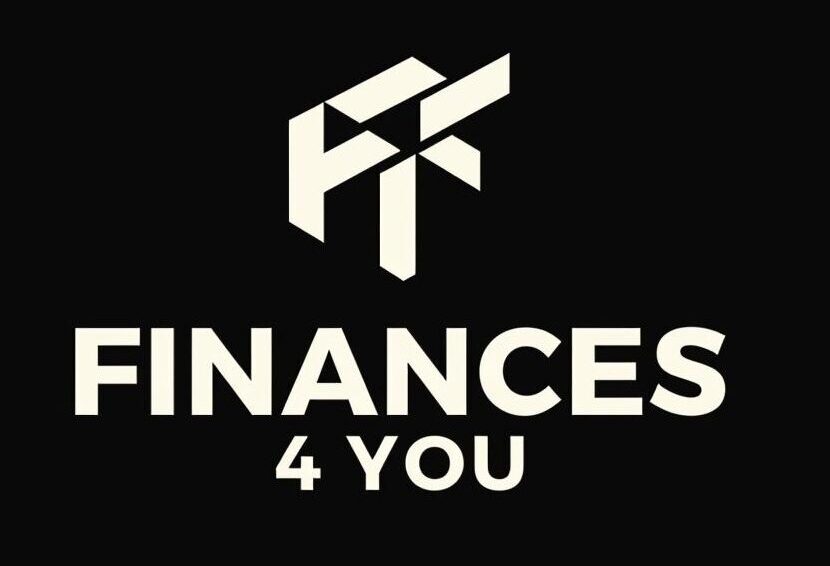Breaking Free from the Debt Cycle: Finding Your Path to Financial Freedom
Are you lying awake at night, staring at the ceiling, wondering how you’ll ever escape the endless cycle of minimum payments? Take a deep breath – you’re not alone on this journey, and there is a way forward.
The best debt management programs offer a lifeline when you’re drowning in financial stress. Unlike temporary fixes that just kick the can down the road, these programs provide a structured pathway to becoming debt-free with lower interest rates and the simplicity of a single monthly payment.
If you’re ready to take back control of your finances, here’s a quick look at top options that have helped thousands find relief:
| Program Type | Best For | Average Monthly Fee |
|---|---|---|
| Nonprofit Credit Counseling | Most consumers | $25-35 |
| Financial Wellness Programs | Lower fees | $28 |
| Credit Management Services | Credit score improvement | $25-33 |
| Consumer Credit Counseling | Lower interest rates | $39 setup, $25 monthly |
| Comprehensive Credit Counseling | Comprehensive education | $40 setup, $32 monthly |
What might surprise you is the success rate of these programs. Last year alone, nearly 9,000 people completely eliminated their debt through quality Debt Management Programs. Think about that – 9,000 people who were once where you are now, who can now sleep peacefully at night.
“I wish I had called sooner” is something counselors hear almost daily from clients who spent months or even years struggling on their own before reaching out for help.
Debt management programs aren’t loans. They’re structured payment plans where credit counseling agencies work directly with your creditors to:
- Slash your interest rates – often reducing rates from a crushing 20-30% down to around 8%
- Simplify your life with one manageable monthly payment instead of juggling multiple due dates
- Stop those anxiety-inducing collection calls that make your stomach drop every time the phone rings
- Create a clear finish line with most clients becoming debt-free in 3-5 years
- Rebuild your financial reputation with clients seeing an average 84-point improvement in their credit scores
Unlike debt settlement, which can leave lasting damage to your credit, or bankruptcy, which should truly be a last resort, debt management programs help you honor your obligations while saving significantly on interest and fees.
Most reputable programs charge a reasonable one-time setup fee ($35-40) and a monthly fee ($25-35) that’s typically offset many times over by what you’ll save in interest. These programs work best for unsecured debts like credit cards, medical bills that have gone to collections, and personal loans.
As one client beautifully put it: “Being able to trust them to do their job allows you to take care of what’s important in your life.” And isn’t that the point? Financial freedom isn’t just about numbers – it’s about reclaiming your peace of mind and future.

Why Choose a Debt Management Program?
When debt starts feeling like quicksand—the more you struggle, the deeper you sink—a debt management program (DMP) can throw you a lifeline. At Finances 4You, we’ve seen countless individuals transform their financial outlook through these structured programs.
A well-designed DMP offers several key advantages that make it worth considering:
Complete Budget Makeover
Most people struggling with debt don’t just need help with payments—they need a fresh approach to money management. During your initial consultation, counselors will sit down with you to analyze your income, expenses, and spending patterns. Together, you’ll create a realistic budget that not only accommodates debt repayment but ensures you can still cover rent, groceries, and other essentials.
Dramatically Lower Interest Rates
This might be the most compelling reason to consider a DMP. If you’re currently drowning in credit card debt with rates between 18-28% APR (which is common for those struggling financially), a DMP can slash those rates down to around 6-9%. Some creditors might even eliminate interest completely!
As Maria, a recent client, told us: “I was paying over $400 a month in interest alone. After enrolling in a debt management program, that dropped to less than $100. It felt like getting a raise!”
End to Collection Calls
Sinking feeling when your phone rings and you see it’s another collection agency? Once you enroll in a DMP, those calls typically stop. Your program administrator notifies creditors that you’re committed to a structured repayment plan, and most creditors prefer this arranged solution to continued harassment.
Realistic Timeline to Debt Freedom
Making minimum payments on high-interest debt can keep you trapped for decades. Most best debt management programs create a clear path to becoming debt-free in just 3-5 years. This definite timeline provides both motivation and relief.
Alejandra, one of our readers who enrolled in a DMP, shared: “It would have taken me 15 years to get out of debt. With a debt management program, it’s only going to take me 3. I can finally see light at the end of the tunnel.”
Credit Score Recovery
Many worry about how a DMP affects their credit score. While there might be a small initial dip when accounts are closed, the long-term impact is typically positive. As you make consistent on-time payments (which account for 35% of your FICO score), your credit history improves. Money Management International reports their clients see an average 84-point improvement after completing their program.

Looking to learn more about various approaches to managing debt? Check out our comprehensive guide on Debt Management Strategies.
How a DMP Works in 5 Simple Steps
Understanding the process can help explain debt management programs and show how straightforward they can be:
-
Free Consultation with a Certified Counselor: Your journey begins with a confidential session with a certified credit counselor who reviews your financial situation. This typically takes about an hour and can be done over the phone, online, or in person.
-
Comprehensive Budget Review: The counselor analyzes your income, expenses, and debt to determine if a DMP is right for you and what you can realistically afford to pay monthly.
-
Creditor Negotiation: If you decide to proceed, the counseling agency contacts your creditors to negotiate reduced interest rates, waived fees, and new payment terms. This negotiation leverages the agency’s existing relationships with hundreds of creditors.
-
Single Monthly Payment: Rather than juggling multiple due dates and payments, you make one monthly deposit to the credit counseling agency, which then distributes payments to your creditors according to the negotiated plan.
-
Progress Tracking and Graduation: Throughout the program, you’ll have access to ongoing support, educational resources, and progress tracking. When you make your final payment, you graduate from the program debt-free!
As LeAnne, a debt management client, explains: “My counselor helped me prioritize my expenses and informed me of options to handle my debt. She provided suggestions on how to balance our budget. For the first time in years, I feel like I can breathe again.”
5 Best Debt Management Program Approaches for 2025
The debt management landscape continues to evolve, with various approaches designed to meet different needs and preferences. At Finances 4 You, we’ve researched the most effective options available in 2025:

Nonprofit Credit Counseling — a top choice for most families
When it comes to getting your finances back on track, nonprofit credit counseling agencies remain the gold standard for best debt management programs. These trusted organizations carry accreditations from respected bodies like the National Foundation for Credit Counseling (NFCC) or the Financial Counseling Association of America (FCAA).
What makes these programs stand out is their transparent pricing structure—typically just $25-$40 monthly—and the fact that you don’t need good credit to qualify. Unlike debt consolidation, there’s no loan involved, which means no new debt to worry about.
The nonprofit network has helped over 35 million people since 2006, with more than 1,500 certified counselors nationwide ready to assist regardless of your income level or financial situation.
As LeAnne, an actual client, shared with us: “We realized that we had more expenses than income. My counselor helped me prioritize my expenses and informed me of options to handle my debt. She provided suggestions on how to balance our budget.”
These agencies have established relationships with creditors, giving them significant negotiating power to secure better terms for you. For more information about these trusted options, you can research accredited nonprofit credit counseling organizations.
Digital-First Tools & Support
For those of us who manage everything from our phones, digital-first debt management programs offer a perfect blend of convenience and support. These tech-savvy options put the power of debt management right at your fingertips.
Imagine checking your debt payoff progress while waiting for coffee or receiving an encouraging notification when you hit a milestone. These platforms feature intuitive mobile app dashboards that track your progress in real-time, with colorful charts that actually make watching your debt shrink kind of satisfying.
The enrollment process is hassle-free with electronic document signing, and if questions pop up at 2 AM (because financial worries don’t respect business hours), 24/7 chat support is there to help. Many platforms even incorporate game-like elements to keep you motivated—earning badges or watching your “financial fitness score” climb as you make progress.
What really sets these digital options apart are their AI-powered budgeting tools that learn from your spending patterns and offer increasingly personalized advice as you progress through your debt management journey.
Specialized Support for Military & Public-Service Members
Military life comes with unique financial challenges—from frequent relocations to deployment considerations—and specialized debt management programs recognize these realities.
These custom programs offer expert guidance on the Servicemembers Civil Relief Act (SCRA), which can cap interest rates at 6% during active duty. When it’s time for a Permanent Change of Station (PCS), these programs provide specific support to help manage the financial strain of moving.
What’s particularly valuable is how these programs align with VA benefits and military pay structures, ensuring your debt management plan works with—not against—your service-related financial situation. For military spouses who often shoulder financial responsibilities during deployments, dedicated support groups provide both practical advice and emotional support.
Many of these programs employ counselors with military backgrounds who truly understand the unique demands of service life. As one Army sergeant told us, “Having a counselor who understood BAH, deployment pay, and the whole military financial picture made all the difference.”
Community & Values-Based Programs
Sometimes the most effective financial guidance comes from people who share your values and understand your community. Values-based debt management programs create a more holistic approach to financial wellness by acknowledging that money decisions don’t happen in isolation.
These programs often operate through religious organizations, community centers, or cultural institutions, with fees partially subsidized by donations to make services more accessible. Beyond the numbers, these programs offer financial coaching that respects and incorporates your personal principles.
The in-person element makes a big difference—local workshops create opportunities to connect with others on similar journeys, while peer accountability systems help you stay on track. When Marcos reached his halfway point in a community-based program, his entire church congregation celebrated the milestone, providing powerful motivation to continue.
These programs excel at cultural competence, recognizing that financial attitudes and practices vary across different communities. As one program director explained, “We don’t just teach generic financial principles; we understand the specific financial pressures and expectations within the communities we serve.”
DIY + Coaching Model
For those who want to take the wheel but appreciate having a navigation system, the DIY-plus-coaching approach offers the perfect balance. This model puts you in control while providing expert guidance when you need it most.
These programs equip you with powerful tools like debt avalanche/snowball templates that help you determine the most efficient payoff strategy for your specific situation. When it’s time to talk to creditors, you’ll have professionally crafted negotiation scripts that help you communicate effectively and confidently.
The real value comes from having on-call mentors available during critical decision points. As Tasha, a program participant, told us: “I handled most of my debt management myself, but having an expert to call before negotiating with my largest creditor saved me thousands.”
This approach typically costs less than full-service programs while providing comprehensive toolkit downloads for budgeting and debt tracking. It’s particularly well-suited for those with some financial knowledge who need structure and occasional expert input.
While tackling your debt, don’t forget to build financial resilience! Check out our Emergency Savings Challenge to create a financial buffer that protects your debt payoff progress.

Recent scientific research on consumer debt stress confirms what many already know—financial struggles take a serious toll on mental health. According to a recent study covered by WTOP News, structured debt management programs not only improve financial outcomes but significantly reduce anxiety and depression symptoms for participants.
How to Compare & Choose the Best Debt Management Programs
Finding the right debt management program feels a bit like dating – you want a good match that understands your needs and won’t break your heart (or wallet). At Finances 4You, we’ve seen how the right program can transform financial stress into peace of mind. Here’s how to find your perfect match:
Fee Transparency
Good programs have nothing to hide when it comes to costs. Think of fees like ingredients on a food label – they should all be listed clearly:
Most reputable programs charge a modest one-time setup fee (typically $35-40) and a monthly administration fee ($25-35). Some offer fee caps or hardship waivers if you’re in a particularly tight spot.
“I was relieved when my counselor walked me through every penny I’d pay,” shares Maria, a debt management client. “No surprises meant I could budget confidently.”
The FTC has your back here – it’s actually illegal for debt relief companies to charge fees before they’ve settled or reduced your debt. A company asking for money upfront is waving a serious red flag.
Accreditation and Certification
Think of accreditations as the “background check” for your debt management program. Quality programs proudly display credentials like:
NFCC membership (National Foundation for Credit Counseling) – the oldest and largest nonprofit financial counseling organization in the country.
FCAA membership (Financial Counseling Association of America) – another respected nonprofit organization that sets high standards.
HUD certification for housing counseling services, IAPDA certification for debt settlement specialists, and BBB accreditation with strong ratings also signal trustworthiness.
These aren’t just fancy acronyms – they mean the organization has met rigorous standards and follows ethical practices.
Interest Rate Reductions
The whole point of a debt management program is saving money, right? Compare what different programs can deliver:
Good programs typically drop credit card interest rates from the painful 20-30% range down to around 8%. Some creditors might even eliminate interest completely for clients in these programs.
Don’t be shy – ask for specific examples with major creditors you currently use. A program that has strong relationships with your specific creditors will likely negotiate better terms.
Completion Rate
This overlooked statistic tells you volumes about a program’s effectiveness. The industry average hovers between 55-65% completion rate, but top programs achieve much higher success.
Lower completion rates often signal overly aggressive payment schedules that people simply can’t maintain. Higher rates suggest realistic planning and excellent ongoing support.
As one counselor explained: “We’d rather set you up with a 4-year plan you can complete than a 3-year plan you’ll abandon in frustration.”
Customer Reviews and Testimonials
Look beyond the glossy marketing materials to find the real story:
Check Trustpilot, Consumer Affairs, and Google reviews from actual clients. Pay special attention to reviews mentioning long-term success, not just the initial setup experience. Also note how the company responds to negative reviews – do they address concerns professionally or get defensive?
“Reading other people’s success stories gave me hope when I was feeling hopeless,” shares Thomas, who completed his program last year.
| Feature | Debt Management Program | Debt Settlement | Consolidation Loan | Bankruptcy |
|---|---|---|---|---|
| Pays full debt amount | Yes | No (typically 50-75%) | Yes | No |
| Credit score impact | Initially minor negative, then positive | Significant negative | Initially positive | Severe negative |
| Timeline | 3-5 years | 2-4 years | 3-7 years | 7-10 years on record |
| Monthly fees | $25-40 | % of enrolled debt | Interest on loan | Legal fees |
| Interest rates | Reduced (6-9%) | N/A | Fixed (typically 8-20%) | N/A |
| Collection calls | Stop | May continue until settlement | Stop | Stop (automatic stay) |
| Tax consequences | None | Possible tax on forgiven debt | None | Complex |
Red Flags & Scam Avoidance
Unfortunately, where there’s financial vulnerability, there are predators. Keep your radar tuned for these warning signals:
Upfront fees before results break FTC rules. Period. The Federal Trade Commission’s Telemarketing Sales Rule explicitly prohibits charging fees before delivering debt relief results. If someone wants your credit card before they’ve helped you, that’s your cue to exit.
No written plan is a major warning sign. Legitimate programs provide detailed written plans outlining which debts they’ll include, payment amounts, timeline, interest rate reductions, all fees, and potential credit impacts. Vague promises aren’t enough.
High-pressure sales tactics suggest the company is more interested in your money than your financial wellbeing. Quality programs give you breathing room to consider options. Be wary of “today only” specials or guarantees that sound too good to be true.
Missing FTC compliance disclosures should raise immediate concerns. Legitimate companies clearly explain that savings depend on your ability to make regular deposits, potential tax consequences, and that not all creditors participate in their programs.
For deeper protection against scams, take a few minutes to review the FTC’s guidelines on debt relief services.
Credit-Score Impact & Recovery
Many people worry about how debt management programs affect their credit scores. Here’s the honest timeline:
Initial Impact: When you enroll, your participating credit accounts are usually closed, which can temporarily lower your score. This happens because your available credit decreases (affecting utilization ratio) and account closures can shorten your credit history. The program itself may be noted on your credit report.
But here’s the perspective check: this initial dip is typically minor compared to the damage from continued late payments or maxed-out cards.
Recovery Phase: As you progress through the program, your credit score often improves thanks to consistent on-time payments (which make up 35% of your FICO score) and decreasing debt balances (30% of your score). Past delinquencies begin to fade as positive payment history builds.
Long-Term Outlook: By program completion, many clients see remarkable credit score improvements. Money Management International reports an average 84-point boost for successful graduates.
“It increased my confidence,” shares David, who completed his program last year. “Because you were able to identify a problem, set a goal, make a plan and then achieve the goal.”
For additional strategies to rebuild your credit while managing debt, our guide on How to Boost Credit Score offers practical steps you can take alongside your debt management program.

Frequently Asked Questions about the Best Debt Management Programs
Will I be able to keep one credit card for emergencies?
One of the most common questions we hear at Finances 4 You is whether you can keep a credit card for emergencies while on a debt management program. The short answer? It depends.
Most best debt management programs do require you to close all credit cards included in the program. This is because keeping credit available can tempt you back into the debt cycle – something your counselor wants to help you avoid.
That said, there’s often some flexibility:
“My counselor worked with me to keep one low-limit card outside the program for travel emergencies,” shares Michael, a debt management client who successfully completed his program last year.
Some programs may allow you to:
- Keep one existing card with a small balance outside the program
- Maintain a secured credit card backed by a savings deposit
- Keep a separate card for business expenses if you’re self-employed
Each program has different policies, and sometimes it comes down to individual creditors. For instance, many debt management programs typically require closing all enrolled cards, but many creditors understand the need for emergency access and will allow one card to remain open.
The best approach? Build an emergency savings fund while in your program. As one financial counselor puts it: “An emergency fund is better than an emergency card – one solves problems, the other creates them.”
How much can I realistically save on interest and fees?
When clients see their potential savings through a best debt management program, many wish they’d enrolled years earlier. The numbers can be truly life-changing.
Let’s talk real savings. Most people see their credit card interest rates drop dramatically – typically from the painful 20-30% range down to around 8%. For those facing genuine hardship, some creditors may reduce rates even further, sometimes as low as 0-2%.
Department store cards, which often carry the highest rates (25-29%), usually see the most dramatic reductions when included in a debt management program.
Beyond interest savings, those pesky fees disappear too:
- No more $39 late fees when you’re juggling too many payment dates
- Over-limit fees vanish as accounts are closed to new charges
- Annual fees are often waived on enrolled accounts
Here’s what this looked like for Sarah, one of our readers who shared her journey:
“I had $22,800 in credit card debt at about 24% interest. Making minimum payments, I would have paid over $63,000 and been in debt for decades. Through my debt management program, I paid about $17,300 over four years. That’s over $46,000 saved – enough for a down payment on my first home!”
While everyone’s situation differs, most clients save thousands through a well-structured program. The peace of mind that comes with a clear payoff date? That’s priceless.
How long will a note about my DMP stay on my credit report?
Many people worry that a debt management program will create a permanent negative mark on their credit report, similar to bankruptcy. Good news – it doesn’t work that way.
Unlike bankruptcy or debt settlement, debt management programs themselves aren’t directly reported to credit bureaus as negative events. However, your credit report will reflect some changes:
Your enrolled accounts may show a notation like “being paid through a debt management program” or “debt management plan.” This isn’t considered negative information – it’s simply informational.
“When I checked my credit report six months into my program, I noticed my cards were marked as ‘closed by consumer’ and ‘being paid through counseling’,” explains James, who completed his program in 2023. “But my score was actually improving because I was making on-time payments consistently.”
These notations typically disappear once you complete the program and the account is paid in full. The closed accounts themselves will remain on your report for up to 10 years, but as positive entries showing complete payment.
The temporary notations have far less impact on your credit score than late payments, collections, or maxed-out cards. In fact, the positive payment history you build through the program typically outweighs any minor impact from these notations.
Most clients see their credit scores improve significantly by the end of their program – making them eligible for better rates on mortgages, auto loans, and eventually, new credit cards (though hopefully you’ll use them differently this time around!).
Conclusion
Managing debt effectively isn’t just about eliminating what you owe—it’s about creating a foundation for lasting financial health. The best debt management programs provide not only immediate relief from overwhelming debt but also the education and tools needed to prevent future financial challenges.
At Finances 4 You, we believe that becoming debt-free is a crucial stepping stone toward building genuine wealth. Think of it as clearing the path before you can start running toward your financial goals. The weight of debt payments that once held you back can transform into investment opportunities once you’ve completed a debt management program.
As you consider your options, keep these important takeaways in mind:
First, choose a program that truly fits your specific situation. Whether that’s working with a traditional nonprofit agency with decades of experience, embracing a tech-forward digital platform that keeps you engaged, or finding specialized support designed for your unique circumstances—the right fit matters tremendously.
Second, always verify credentials and understand all fees before signing up. This small bit of due diligence can save you from potential headaches down the road. A trustworthy program will be completely transparent about what you’ll pay and what you’ll receive in return.
Third, commit wholeheartedly to the process. Debt management programs work best when you follow the plan consistently and take advantage of the educational resources provided. Think of it as financial fitness—the results come from showing up regularly, not just when it’s convenient.
Finally, look beyond just debt repayment. The most successful program graduates use this opportunity to build emergency savings and develop sustainable financial habits that serve them for decades to come.
I’m always moved by the stories of debt management program graduates. As one client shared: “A quality debt management program changed not only my life, my family life, because now I can spend more time at home.” The benefits truly extend far beyond your bank account—less financial stress means more mental and emotional bandwidth for the people and pursuits that matter most.
Debt freedom isn’t the finish line—it’s actually the starting point of an exciting new chapter in your financial story. With the burden of high-interest debt removed, you can finally direct your resources toward building assets and creating the life you envision.
Ready to take the next step in your financial journey? Explore our additional resources on Wealth Management to learn how debt freedom can be the launching pad for building lasting prosperity.
We’re here to help you write your financial success story with confidence and clarity. Because at Finances 4 You, we believe everyone deserves the peace of mind that comes with financial freedom.






2 thoughts on “Debt Be Gone! The Ultimate Roundup of Best Debt Management Programs”
Pingback: Master Your Money: Simple Steps to Manage Debt Effectively - Finances 4 You
Pingback: Debt-Free Dreams: Effective Techniques to Manage Your Debt - Finances 4 You
Comments are closed.